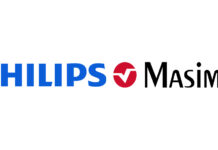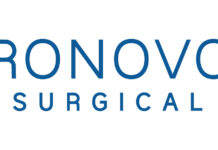Hearing loss and tinnitus are very real risks for people working in noisy environments. Here are 4 things your business should be doing to protect your employees.
Hearing loss and other conditions like tinnitus are serious health conditions that can affect anyone, regardless of age or occupation. However, it is particularly common in people who work in noisy environments. In the UK, over half the population has experienced symptoms associated with tinnitus (albeit temporary in most cases). And in the United States, an estimated 22 million workers are exposed to hazardous noise levels at work. This exposure can lead to noise-induced hearing loss (NIHL), which is a permanent and irreversible condition
NIHL can have a significant impact on an employee’s life. It can make it difficult to communicate with others, both at work and at home. It can also lead to social isolation and depression. In some cases, NIHL can even be disabling. It is estimated that NIHL costs the US economy over $242 billion each year.
As an employer, you have a responsibility to protect your employees from hearing loss. Here are four things you can do to create a hearing-safe workplace:
1. Conduct a noise assessment.
The first step to protecting your employees’ hearing is to identify and assess the noise levels in your workplace. You can do this by hiring a professional to conduct a noise assessment. The assessment will measure the noise levels in different areas of your workplace and identify any areas where noise levels are hazardous.
2. Implement noise control measures.
Once you have identified the hazardous noise levels in your workplace, you need to take steps to control them. This may involve implementing noise control measures such as:
Engineering controls: These controls eliminate or reduce noise at the source. For example, you could install silencers on machinery or use sound-absorbing materials.
Administrative controls: These controls change the way work is done to reduce noise exposure. For example, you could rotate employees to different areas of the workplace or limit the amount of time employees are exposed to high noise levels.
Personal protective equipment (PPE): PPE is the last line of defense against noise exposure. You should provide your employees with PPE such as earplugs or earmuffs whenever they are exposed to hazardous noise levels.
3. Provide hearing training.
All of your employees should be trained on how to protect their hearing. This training should cover topics such as the effects of noise on hearing, how to use PPE properly, and how to identify signs of hearing loss.
4. Implement a hearing conservation program.
A hearing conservation program is an ongoing program that helps to protect your employees’ hearing. The program should include:
Regular noise monitoring: This will help you to identify any changes in noise levels in your workplace.
Annual hearing tests: These tests will help you to identify any early signs of hearing loss in your employees.
Hearing protection training: This training will help your employees to use PPE properly and protect their hearing.
Protecting your employees’ hearing is good for business. It can help you to:
Reduce your workers’ compensation costs: NIHL is a costly workers’ compensation claim. By protecting your employees’ hearing, you can help to reduce your workers’ compensation costs.
Improve employee morale: Employees who feel that their employer cares about their health and safety are more likely to be engaged and productive.
So not only is good for your staff, it’s good for retention too.
Attract and retain top talent: Top talent is looking for employers who care about their health and safety. By protecting your employees’ hearing, you can make your company more attractive to top talent.
By taking steps to protect your employees’ hearing, you can create a healthier and safer workplace. You can also help your employees to avoid the devastating effects of NIHL.















